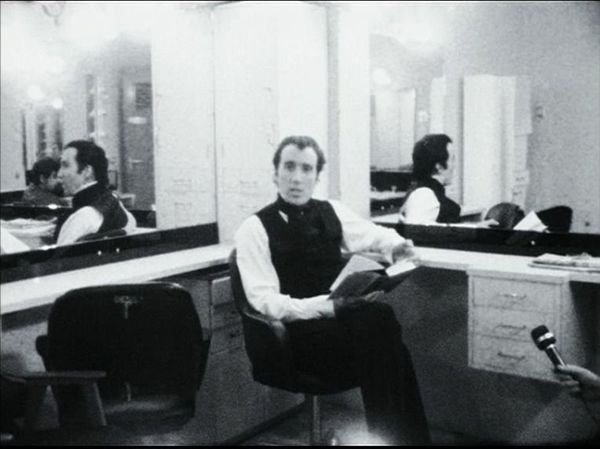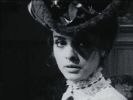Eye For Film >> Movies >> Vampir-Cuadecuc (1971) Film Review
Vampir-Cuadecuc
Reviewed by: Rebecca Naughten

Vampir-Cuadecuc was made in and around the shooting of Jesús "Jess" Franco's Count Dracula in 1970. An avant-garde 'making-of' is perhaps the best description of the film because it utilises material from within and around the other production in order to retell the story in question in its own inimitable style. Director Pere Portabella could be described as an experimental filmmaker - he was outside of the mainstream by political necessity during the dictatorship - which makes him an odd pairing with the more 'commercial' (to be polite) Jess Franco (although he nonetheless also had his own run-ins with the regime's censors). But Portabella's repurposing and reimagining of the elements at Franco's disposal creates something genuinely (and appropriately) otherworldly.
Portabella effectively strips back any hint of Franco's characteristic excess. Instead of colour, he films in black and white on 16mm - at times with such pronounced contrast that images look like relief carvings - and no diagetic sound is used until the final sequence when Christopher Lee reads the death of Count Dracula from Bram Stoker's novel. Instead the soundtrack (created by Portabella's frequent collaborator, composer Carles Santos) utilises disparate sounds and noises - an odd knocking (like something inside of a box - what might that be?) starts and persists when Jonathan Harker (Fred Williams) arrives at the Count's castle, and elsewhere incongruously modern sounds such as pneumatic drills or airplanes can be heard - to create an eerie and unsettling ambience.

Irises are sometimes used to transition between scenes and the 16mm gives the appearance of old and degraded film stock in certain sequences, further evoking the early cinema that Portabella pays homage to - Vampyr (Carl Theodor Dreyer, 1932) and Nosferatu (FW Murnau, 1922) are obvious visual influences. Out of place details captured by the roving camera - such as the actresses in modern dress and smoking between takes or Lee wearing sunglasses - also simultaneously position the Dracula myth as timeless. But the director also seeks out the manufacture of this myth - men creating the fog through which a horse-drawn carriage will pass, fake cobwebs added to age objects, and fake blood being daubed on prone females are all recorded - and the mechanics of filmmaking are as much an element of fascination for him as the mythology of Stoker's Count. The two aspects come together in a sequence where Lee (who would collaborate with Portabella on another film - Umbracle - the same year) removes the prosthetics and accoutrements (contact lenses, hair, fangs) that transform him into an onscreen monster - a metamorphosis in reverse and a demythologising or deconstruction of both a film star and one of his most famous roles (something that Franco was cashing in on).
Having not seen Franco's film, it's difficult to say whether it is as schlocky as it appears here - vampire bats on very obvious wires and Herbert Lom as Van Helsing making a job out of killing a woman with a hammer and wooden stake - but Portabella would not have made the same film without Lee or the other elements that Franco had put into play (Soledad Miranda (as Lucy Westenra) is a standout). Those expecting shocks and scares will be disappointed but there are moments of ephemeral beauty to be found in a profoundly different take on a myth and the filmmaking surrounding it.
Reviewed on: 14 Sep 2015

















